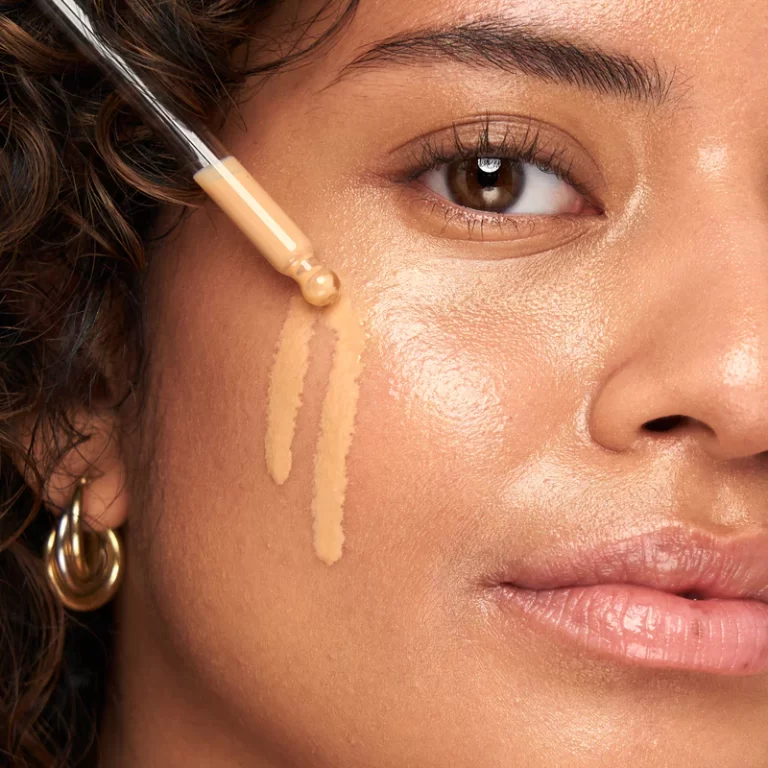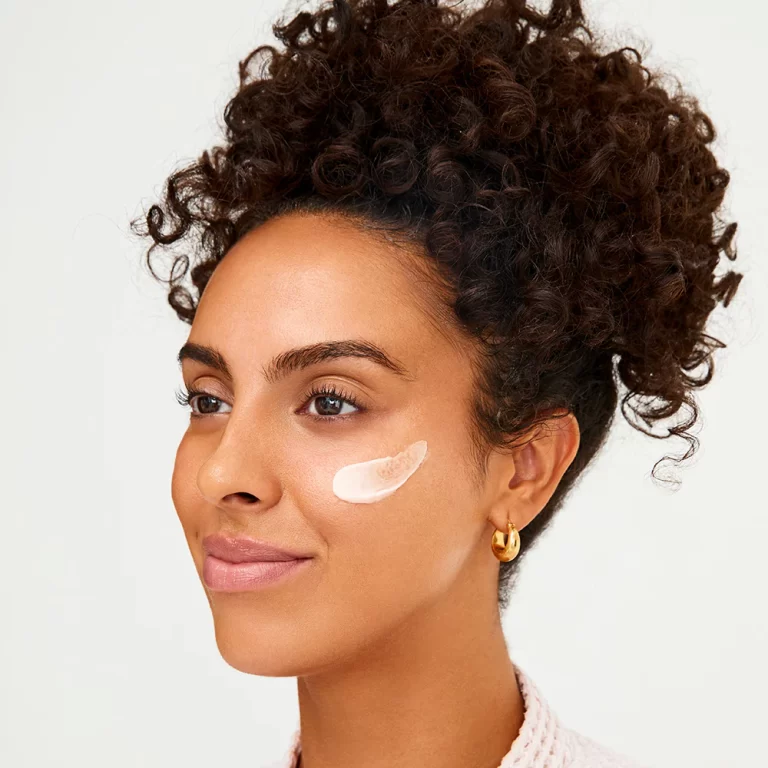
Water-Based Primer Makeup: Achieving a Flawless Canvas
Understanding Water-Based Primer Makeup
Water-based primers have revolutionized the makeup industry, offering a lightweight alternative to traditional silicone-based formulas. These innovative products use water as their primary ingredient, creating a refreshing and breathable base for makeup application. Water-based primer makeup work by hydrating the skin while simultaneously preparing it for foundation and other cosmetics. Unlike their silicone counterparts, which create a barrier on the skin, water-based primers absorb quickly, allowing the skin to breathe and reducing the risk of clogged pores.
This makes them particularly suitable for those with sensitive or acne-prone skin. The hydrating properties of water-based primers also help to plump the skin, minimizing the appearance of fine lines and creating a smooth canvas. By understanding the unique properties of water-based primers, makeup enthusiasts can make informed decisions about incorporating these products into their beauty routines for optimal results.
Benefits of Water-Based Primers
Water-based primers offer a multitude of benefits that cater to various skin types and concerns. First and foremost, their lightweight texture provides a barely-there feel, making them ideal for those who dislike the heaviness of traditional primers. The hydrating nature of these primers helps to combat dryness and flakiness, ensuring a smooth makeup application even on parched skin. For oily skin types, water-based primers can help balance moisture levels without adding excess oil, potentially reducing sebum production throughout the day.
These primers also excel in creating a natural, dewy finish that enhances the skin’s radiance without looking greasy. Many water-based formulas incorporate skincare ingredients such as hyaluronic acid, vitamins, and antioxidants, offering additional benefits beyond makeup prep. The breathable nature of water-based primers makes them less likely to cause breakouts or irritation, making them a go-to choice for sensitive skin. Additionally, these primers often work well with both water-based and oil-based foundations, providing versatility in makeup routines. By harnessing these benefits, users can achieve a flawless, long-lasting makeup look while nurturing their skin.
Key Ingredients in Water-Based Primers
The efficacy of water-based primers lies in their carefully curated ingredient lists. Water, as the primary component, serves as a vehicle for other beneficial ingredients. Hyaluronic acid is a common addition, known for its ability to hold up to 1000 times its weight in water, providing intense hydration and plumping effects. Glycerin, another humectant, works alongside hyaluronic acid to attract and retain moisture in the skin. Many water-based primers incorporate niacinamide, a form of vitamin B3 that helps regulate oil production, minimize pores, and improve skin texture.
Antioxidants such as vitamin E and green tea extract protect the skin from environmental stressors and free radical damage. Some formulations include light-reflecting particles to create a subtle, illuminating effect. Aloe vera is often used for its soothing and anti-inflammatory properties, making it ideal for sensitive skin types. Natural extracts like chamomile and cucumber provide additional calming benefits. Silica, while not water-based, is sometimes included in small amounts to help absorb excess oil and create a smooth surface for makeup application. Understanding these key ingredients allows consumers to choose water-based primers that best address their specific skin concerns and makeup goals.
Application Techniques for Water-Based Primers
Proper application of water-based primers ensures maximum effectiveness and a flawless makeup base. Begin with clean, moisturized skin, allowing any skincare products to fully absorb before primer application. Shake the primer well before use to ensure all ingredients are properly mixed. Dispense a small amount, typically a pea-sized portion, onto the back of the hand or a clean mixing palette. Using clean fingertips, a makeup sponge, or a flat foundation brush, apply the primer in gentle, upward strokes across the face. Pay special attention to areas with enlarged pores, fine lines, or uneven texture.
For oily T-zones, use a patting motion to work the primer into the skin, which can help control shine throughout the day. Allow the primer to set for 30 seconds to a minute before proceeding with foundation application. For dry areas, consider applying a second thin layer of primer to ensure adequate hydration. When using water-based primers under the eyes, gently pat the product into the delicate skin rather than rubbing. Some makeup artists recommend mixing a small amount of water-based primer with foundation for an ultra-dewy, natural finish. Experiment with different application methods to find the technique that works best for individual skin types and desired makeup looks.
Choosing the Right Water-Based Primer for Your Skin Type
Selecting the appropriate water-based primer requires consideration of individual skin types and concerns. For dry skin, opt for primers rich in hyaluronic acid and glycerin to provide intense hydration. Those with oily skin should look for water-based primers containing oil-controlling ingredients like niacinamide or zinc oxide. Combination skin types can benefit from primers that offer balanced hydration while mattifying oily areas. Sensitive skin requires gentle, fragrance-free formulations with soothing ingredients like aloe vera or chamomile.
For mature skin, choose primers with anti-aging properties such as peptides or collagen-boosting ingredients. Acne-prone individuals should seek non-comedogenic formulas that won’t clog pores, potentially with added salicylic acid for its acne-fighting properties. Those with redness or uneven skin tone can benefit from color-correcting water-based primers with green or lavender tints. For a luminous glow, look for primers infused with light-reflecting particles or pearlescent pigments. Consider the climate and environment when selecting a primer; humid conditions may require more mattifying formulas, while dry climates call for extra hydration. By matching the primer to specific skin needs, users can maximize the benefits of water-based formulations and achieve optimal makeup results.

Comparing Water-Based Primers to Other Types
Water-based primers differ significantly from their silicone and oil-based counterparts in terms of texture, performance, and skin compatibility. Silicone-based primers create a smooth, velvety surface by filling in pores and fine lines, but can feel heavy and potentially clog pores. Water-based primers, in contrast, offer a lightweight, breathable alternative that hydrates the skin without creating a barrier. Oil-based primers provide intense moisture and work well for extremely dry skin but can exacerbate oiliness and breakouts in acne-prone individuals.
Water-based formulas strike a balance, offering hydration without excess oil. In terms of makeup longevity, silicone primers often outperform water-based options in extreme conditions or for all-day wear. However, water-based primers excel in creating a natural, skin-like finish and are less likely to pill or ball up under foundation. They also tend to work better with water-based foundations, ensuring seamless blending. When it comes to skincare benefits, water-based primers often incorporate a wider range of beneficial ingredients compared to silicone or oil-based versions. While each type of primer has its place in the makeup world, water-based formulas offer a versatile option that caters to a wide range of skin types and concerns.
Top Water-Based Primers on the Market
The beauty industry offers a diverse array of water-based primers to suit various preferences and skin types. The Too Faced Hangover Replenishing Face Primer stands out for its coconut water-infused formula that hydrates and brightens the skin. For those seeking a matte finish, the Becca Ever-Matte Poreless Priming Perfector effectively controls oil without drying the skin. The First Aid Beauty Hello FAB Coconut Skin Smoothie Priming Moisturizer combines skincare and makeup prep, offering hydration and a subtle glow.
Glossier’s Priming Moisturizer Balance provides oil control and hydration in a lightweight gel formula ideal for combination to oily skin. For sensitive skin, the Elf Cosmetics Jelly Pop Dew Primer offers a soothing, water-based gel texture with a subtle cooling effect. The Laura Mercier Pure Canvas Hydrating Primer infuses the skin with moisture while creating a smooth base for makeup. Those looking for added sun protection might opt for the Supergoop!
Unseen Sunscreen SPF 40, which doubles as a clear, water-based primer. The Milk Makeup Hydro Grip Primer combines hydrating ingredients with gripping properties for extended makeup wear. By exploring these top-rated options, consumers can find water-based primers that align with their specific skin needs and makeup preferences.

Incorporating Water-Based Primers into Skincare Routines
Water-based primers seamlessly integrate into existing skincare routines, enhancing both skin health and makeup performance. After cleansing and toning, apply any treatment serums or essences. Follow with a lightweight, water-based moisturizer to avoid overloading the skin. Allow the moisturizer to absorb fully before applying the water-based primer. This layering technique ensures that the skin receives adequate hydration without compromising the primer’s effectiveness. For those using chemical exfoliants or retinoids, consider applying the water-based primer after these active ingredients to create a buffer and reduce potential irritation.
In the morning, apply sunscreen after the water-based primer if it doesn’t contain SPF. For nighttime skincare routines, skip the primer and focus on nourishing and repairing products. Some skincare enthusiasts use water-based primers as a lightweight moisturizer on no-makeup days, taking advantage of their hydrating and skin-perfecting properties. During seasonal transitions, adjust the use of water-based primers to accommodate changing skin needs. By thoughtfully incorporating water-based primers into skincare routines, users can maximize both skin health and makeup longevity.
The Future of Water-Based Primer Technology
The evolution of water-based primer technology continues to advance, promising even more innovative formulations in the future. Researchers are exploring the integration of advanced hydration technologies, such as micro-encapsulated water droplets that burst upon application for an intense moisture boost. The development of adaptogenic primers that respond to individual skin needs throughout the day is on the horizon, potentially offering customized oil control and hydration.
Biotechnology may lead to the creation of probiotic-infused primers that support the skin’s microbiome while preparing it for makeup. Sustainability is becoming increasingly important, with brands focusing on eco-friendly packaging and naturally derived, biodegradable ingredients. The incorporation of smart technology into beauty routines may result in water-based primers that can be customized via smartphone apps, allowing users to adjust formulations based on daily skin conditions or environmental factors.
Anti-pollution properties are likely to become standard in water-based primers, offering protection against urban environmental stressors. As the line between skincare and makeup continues to blur, expect to see more water-based primers with potent active ingredients that offer long-term skin benefits beyond mere makeup preparation. These advancements in water-based primer technology promise to revolutionize the way we approach both skincare and makeup application, offering increasingly personalized and effective solutions for all skin types.



